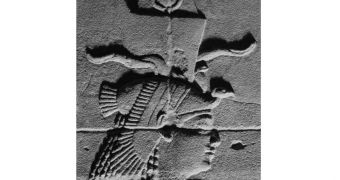Apparently, Cleopatra was not ancient Egypt's only female pharaoh, as her unique crown belonged to Queen Arsinoë II, 200 years before, a thesis from the University of Gothenburg, Sweden, concluded.
Allowing the re-interpretation of historical events in Egypt after Alexander the Great died, were the ancient symbols on an one-of-a-kind queen's crown, along with new methods of studying status in Egyptian reliefs.
Many researchers agree that the deification of Queen Arsinoë II made her a very important character in ancient Egypt.
She reached the same level as goddesses Hathor and Isis, and 200 years after her death, she was still respected and honored, and Cleopatra even wore the same crown.
Of course, there are many different interpretations of the reasons behind the importance of Queen Arsinoë II, but Maria Nilsson, from the University of Gothenburg, studied her historical importance by interpreting her personal crown and the ancient symbols on it.
The core of her thesis is this crown, and the ancient reliefs gave the additional details that helped picture the queen, the way she dressed, her title, the gods she was represented with and much more.
This famous crown was never actually found, but it was sculpted on statues and according to Egyptian reliefs, it was created with help from Powerful Egyptian priests, so that it would symbolize the qualities of the queen.
Nilsson's thesis challenges the traditional royal line excluding female regents and opposes the attempts that some researchers had of minimizing the importance of Queen Arsinoë while she was still alive.
“My conclusion instead is that Arsinoë was a female pharaoh and high priestess who was equal to and ruled jointly with her brother and husband, and that she was deified during her actual lifetime,” she said.
“It was this combination of religion and politics that was behind her long-lived influence.”
Cleopatra was not the only one to use the crown for its important symbolism, male offspring – all called Ptolemy, used it as a model for creating a new crown, which was given to the goddess Hathor so that she would help the Egyptians during the civil war.
The thesis is based on material coming from Egypt, and it can be a good way of better understanding the political and religious development of the country, AlphaGalileo reports.
It also opens the way to future studies of Egyptian crowns as symbols of status and power, and of the development of art in generally.
Nilsson said that “the creation of Queen Arsinoë’s crown was just the beginning.”

 14 DAY TRIAL //
14 DAY TRIAL //